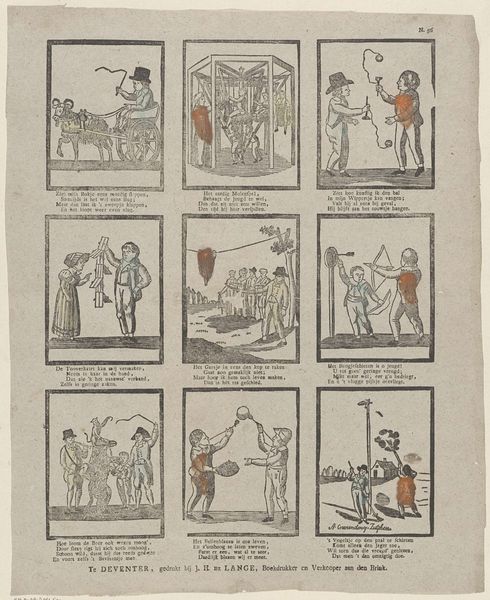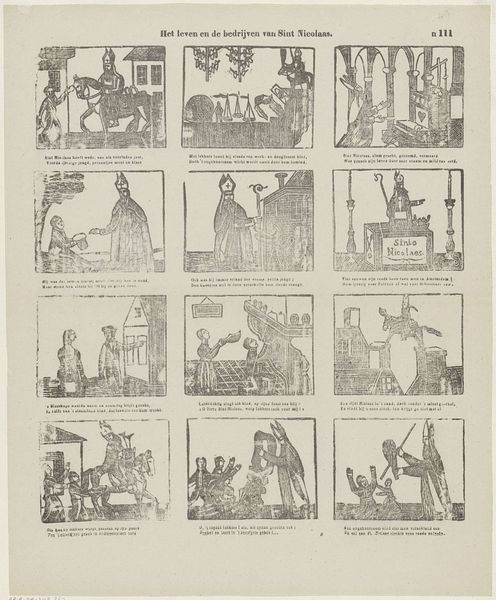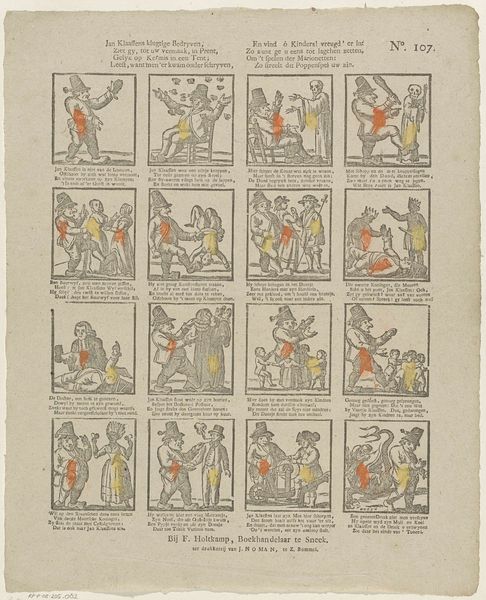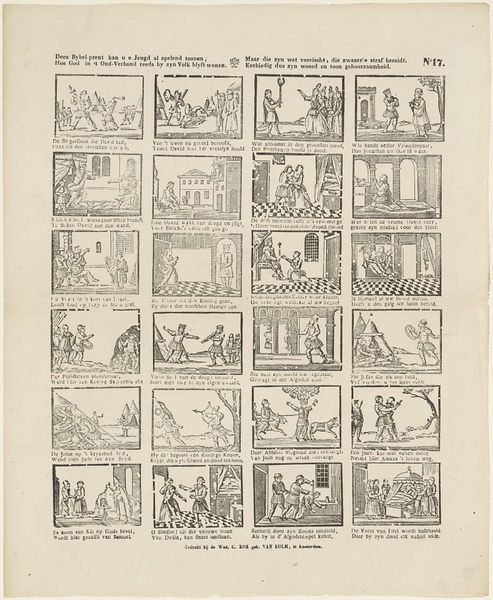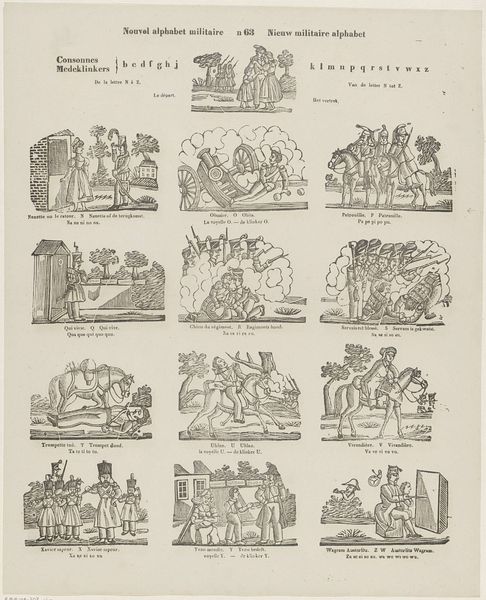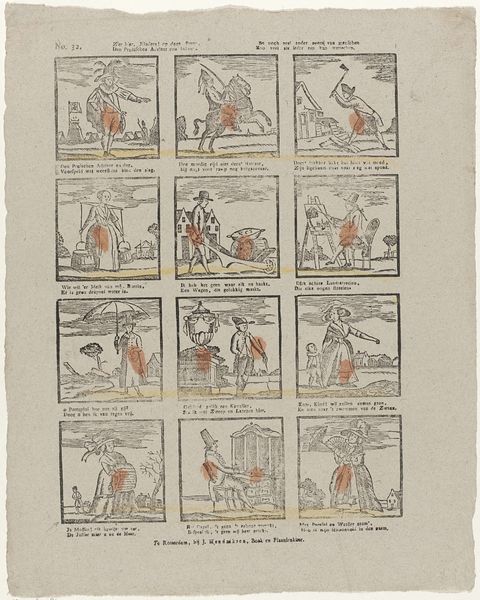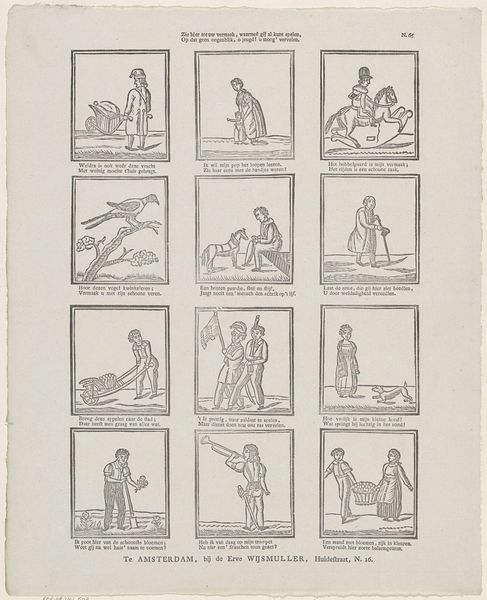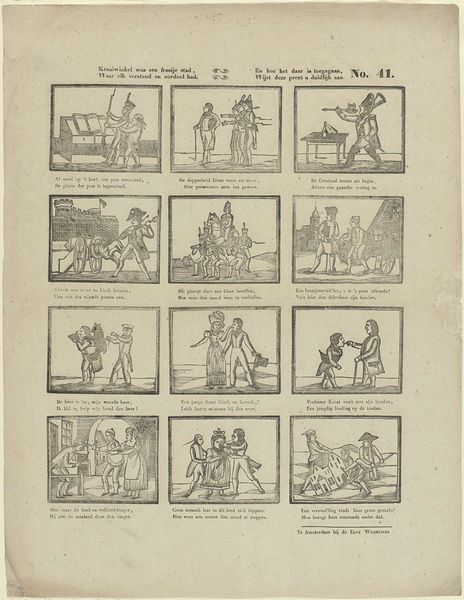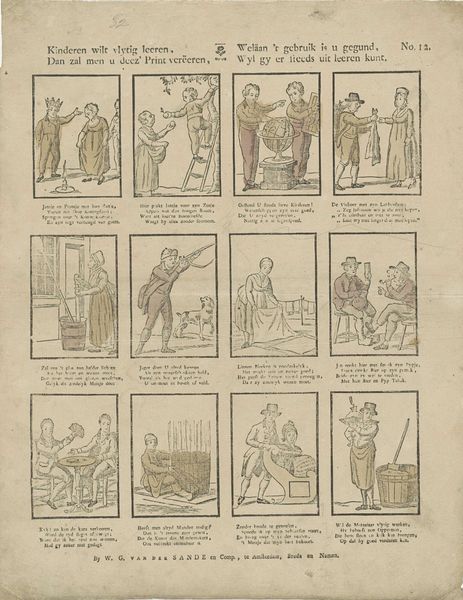
Daar wy hier by poezy, teeken, sny en drukkunst voegen, / Hopen wy dat u genoegen, 't loon van al ons pogen zy. / In uw vroegen levenstyd, ziet ge u hier voor 't volgend leven, / Leerzaam onderigt gegeven, op dat ge u voor onheil mydt 1782 - 1854
0:00
0:00
alexandercranendoncq
Rijksmuseum
print, engraving
#
narrative-art
# print
#
genre-painting
#
engraving
Dimensions: height 417 mm, width 338 mm
Copyright: Rijks Museum: Open Domain
Curator: Let’s turn our attention to an intriguing print housed here at the Rijksmuseum. It’s called "Daar wy hier by poezy, teeken, sny en drukkunst voegen, / Hopen wy dat u genoegen, 't loon van al ons pogen zy. / In uw vroegen levenstyd, ziet ge u hier voor 't volgend leven, / Leerzaam onderigt gegeven, op dat ge u voor onheil mydt," created sometime between 1782 and 1854, and attributed to Alexander Cranendoncq. Editor: Wow, it looks like a storyboard, almost like frames from a long-lost animated film. The figures seem a little stiff, the landscape rather simple, though. There's something quaint, nostalgic about it. Curator: Well, that layout you observed is pretty interesting! The sheet gathers a sequence of scenes framed with an adage each – images teaching a moral or a life lesson. These visual narratives follow the conventions of broadside ballads printed across Europe at the time. Editor: Ballads – that explains the visual flow! Do you see that frame in the top left? The scene in a shop, and below it a sort of aphorism: "He that wants gold is lost"... It suggests, almost playfully, a cause-and-effect relationship between commerce and doom. Almost like a warning sign. Curator: Yes, the piece certainly is didactic. Consider the symbolism. The ships perhaps signify voyages and opportunities, while the images of children juggling on rope are allegorical warnings about risky paths. The goal of these broadsides was always both to delight and instruct, steering audiences from 'onheil', which means trouble, or danger. Editor: Delight and instruct—that’s a tension right there, isn’t it? I can see some are ominous. The central scene featuring sailboats battling on high seas captures a kind of raw drama – almost Shakespearean in mood! In many of the frames there’s a melancholy cast – perhaps suggesting the fleeting nature of these earthly trials. Curator: A fascinating interpretation. One might equally read the frame instead in the optimistic light as demonstrating resilience, overcoming chaos in service of opportunity. What is so exciting is this diversity of interpretations, even centuries later. Editor: Exactly, I find the artwork resonates deeply because even now it invites these conversations, and these are ways in which this relatively old form might provide a guide to navigate life with insight. Curator: Indeed!
Comments
No comments
Be the first to comment and join the conversation on the ultimate creative platform.
